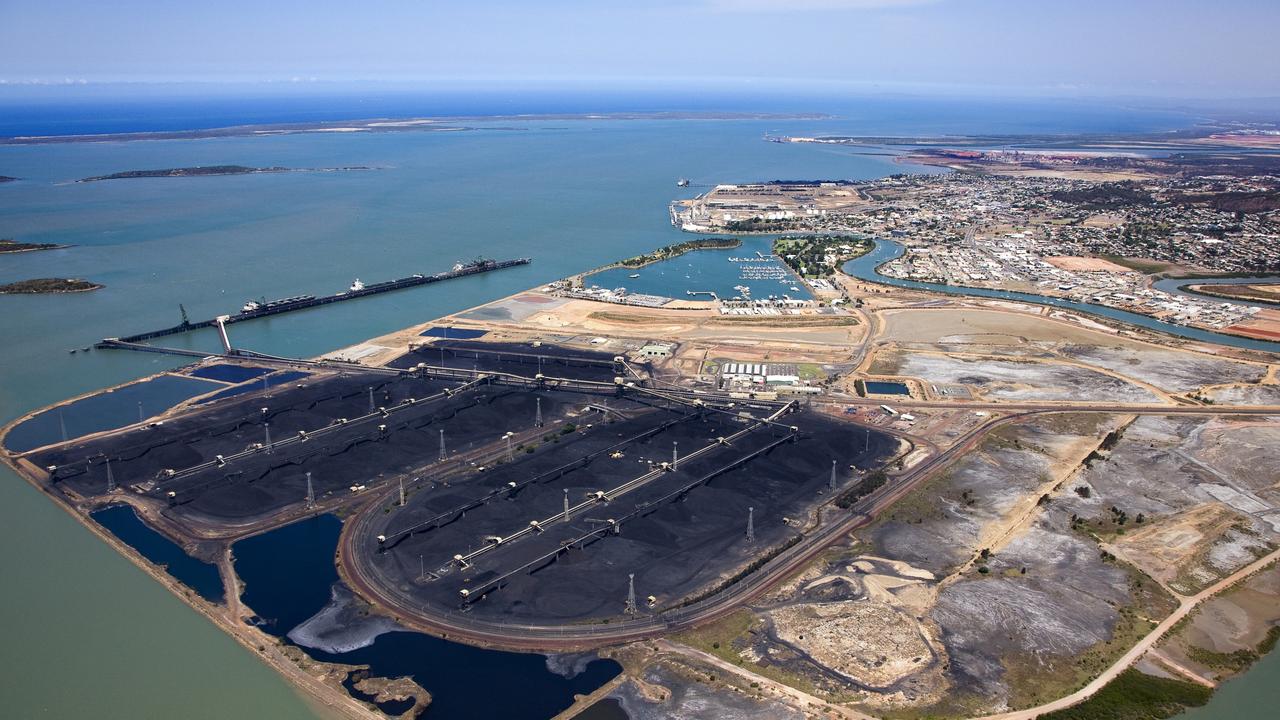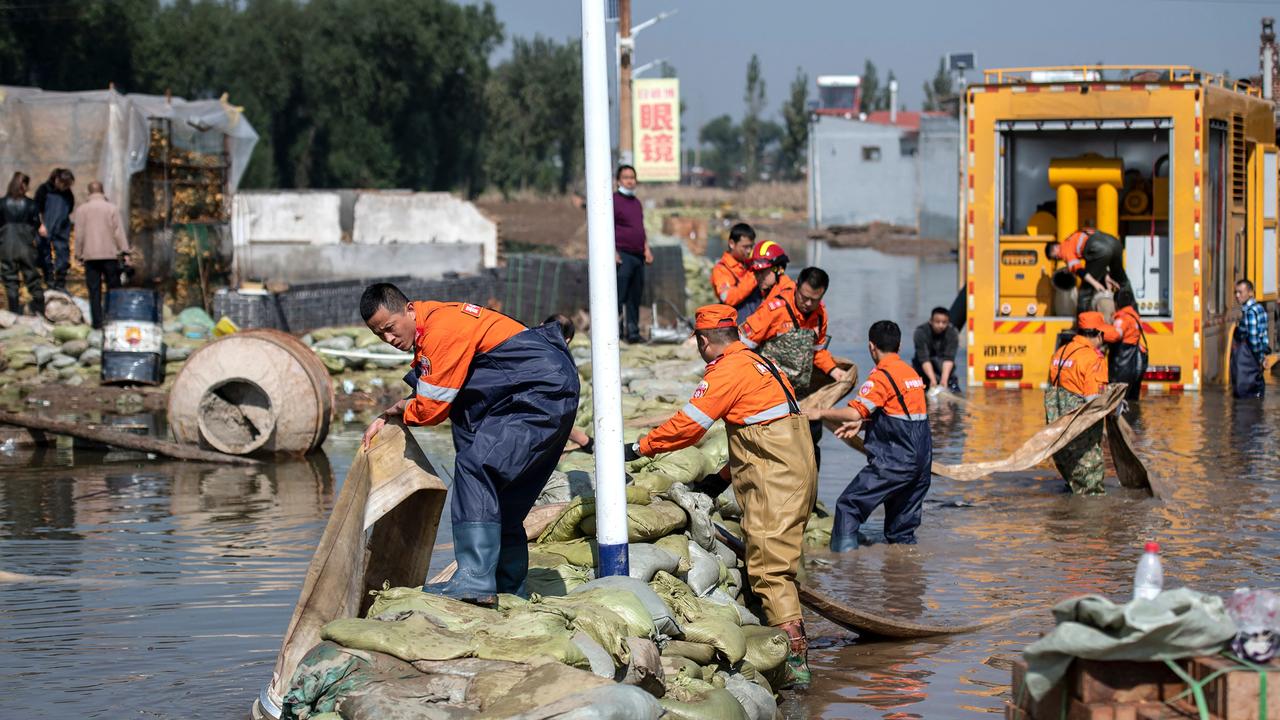China is refusing to back down over Aussie coal but how long can it last?
China has made bold claims about how it’s cutting off Australia but there are factors at play that could see it grovelling back.
China may be in the grips of an energy crisis. Still, it’s determined not to back down on its black-listing of Australian coal. But for how long?
“It seems far-fetched to hope China’s energy shortage will result in China-Australia trade growth,” the Communist Party-controlled Global Times declared earlier this week.
But “unprecedented” coal prices – and a global supply shortfall – appears to have swept aside any impact the coercive trade embargo may have had.
“Unprecedented because international thermal coal prices have already increased more than 100 per cent since May this year,” says Macquarie University energy economics expert Dr Lurion De Mello. “This is not normal.”

The global economy has begun to emerge from its pandemic-imposed shutdown. This, combined with a series of extreme weather events, geopolitical issues, disruption to coal output and the stockpiling by Russia and China has triggered a dramatic fuels shortage.
Gas. Coal. Oil. All are experiencing increased demand.
And things are getting dicey.
China has been suffering extensive power cuts. Its industrial heartland has been ordered to cut back operations. Corporations must take efficiency measures. Residents are subject to surprise blackouts.
Europe is finding itself in a similar situation. Gas prices have surged. Electricity now costs more than 200 per cent more than it did in January. Soon nations there may have to choose between keeping industries producing – or keeping people warm.
The crisis may be a bonanza for coal and gas exporting countries, like Australia.
But how long will it last?
In the balance
“Some believe that China may rely on coal imports to a certain extent to alleviate the power shortages that have spread to several provinces,” the Global Times reports.
It has already dipped into the 1 million tonnes of Australian coal sitting in ships ever since Chinese customs refused to accept deliveries. Even though it’s already been paid for.
“There has even been speculation that China’s coal shortage could bring the window of opportunity for easing a coal-focused trade dispute between China and Australia,” the report adds.
But it concludes such an embarrassing about-face is not necessary.
#GTCartoon: By standing up to #China, #Australia may end up standing alone. @LiuRui60688pic.twitter.com/ZxADeYHVwU
— Global Times (@globaltimesnews) October 14, 2021
“Indonesia, Russia and Mongolia were the three largest sources of coal imports to China. In the first eight months of this year, China’s coal imports from the US, South Africa, Canada, and the Philippines recorded significant growth. In this sense, the coal trade friction between China and Australia didn’t have much impact on China’s coal imports.”
It doesn’t mention that such imports have so far failed to alleviate their own climate-change-induced production issues. Nor the extra cost involved.
“We’re going into a weather pattern where the northern hemisphere is going to experience a longer, colder winter than usual,” says De Mello. “If the winter’s really extreme, I think coal supply is going to be a critical factor. So they may yet decide to relax the import restrictions on Australian coal because there have been so many disruptions.”
Last Hurrah?
Australia is the world’s second-largest exporter of thermal coal. China, Japan and South Korea are its top three customers.
Prices – at some $A330 a ton – are at record highs.
How long it remains so, however, is uncertain.
All three nations have embraced net-zero carbon emission targets as climate change begins to make its mark on the planet. Japan and South Korea have emphasised a desire to make an early move to do so.
So, has coal peaked? Not yet, says De Mello.
China operates 303 coal-fired power plants, De Mello says. “It’s still the go-to fuel for electricity generation there. And China, like a lot of countries, is trying to stockpile thermal coal.”
Despite drives towards low-carbon energy, demand for coal has actually begun to increase again in places such as Germany and India.
“They’re worried they can’t afford to pay for the high gas prices,” says De Mello. “Renewable energy supplies are also erratic amid bad weather, and the Germans are not getting enough gas from Russia. So they’ve been forced to switch back to coal – and they’ve already started to run out”.
Disrupted supply
This year, global coal supplies got off to a bad start after heavy rains and flooding in Newcastle slowed Australian exports in March.
Coal absorbs moisture. Leaving it in the rain makes it much heavier to transport and less efficient to burn. So it makes economic sense to leave it in the ground.
Since then, extended periods of bad weather have also affected Indonesian production. Now China is experiencing heavy flooding in many of its domestic coal production regions.
Buildings have collapsed and landslides swept away roads and infrastructure in more than 70 northern China districts. Floods have affected 1.8 million people in Shanxi province, where 30 per cent of China’s total thermal coal supply is mined.

That’s placed further pressure on China’s already dwindling power-generating coal stockpiles.
Add to the mix a resurgent economy after the pandemic-imposed shutdown and a rapidly expanding and energy-hungry middle class – and you get minimal margin for error.
China’s not the only place experiencing problems.
India’s also suffering. Last week, government agencies reported 63 of the country’s 135 coal-fired power plants had just two days worth of supply in hand. Like China, India’s shortages have been caused by transportation problems brought about by extreme weather.
But it won’t last forever, De Mello says.
“Once that whole winter cycle is over, I think the prices are likely to come down because it’s just kind of crazy at the moment. There will have to be some sort of correction.”
Winds of change
“China’s always on the lookout for alternative fossil fuel and mineral resources,” observes De Mello. “And as soon as they get their hands on it, that’s going to be an issue for Australia.”
China’s coercive economics isn’t just about coal. It’s about everything else, too.
“Australia has the best quality iron ore in the world. But they’ve curtailed imports,” De Mello explains. “Now a lot of Brazilian iron ore is coming into China, even shipments from Canada and Peru are expected to arrive next month. These alternatives together with the relaxation of steel production pretty much caused the iron ore price to crash by some 30 or 40 per cent so far this year.”
A similar situation is looming for gas.
“China has overtaken Japan as the number one importer of Australian Liquified Natural Gas (LNG). The Russians have got this 4000km-long Power of Siberia pipeline project and a gigantic LNG project in the Yamal Peninsula underway to supply gas into eastern China. All these projects, once fully operational, are likely to put a huge strain on Australian exports.” Australia’s coal industry has survived by diverting its exports to India, South Korea and Japan.
And, once these countries begin to enforce their zero-carbon goals, De Mello believes other nations will take up some slack.
“If you look at places like Pakistan and Bangladesh, they’re pretty much desperate,” he says. “Pakistan is burning firewood to keep themselves warm and for cooking because gas is very hard to come by. They are now planning to import high sulphur fuel oil (HSFO), the nasty stuff the shipping industry is trying to move away from.
“That’s the problem. I mean, we can’t just step away from fossil fuels. That isn’t enough. We need to do it gradually and in a thoughtful way.”
And China will soon find itself in a similar situation when it comes to Australian coking coal.
“There are zero alternatives to coal at the moment for the efficient production of steel,” says De Mello. “People are experimenting with hydrogen, such as Sweden. But the capacity for mass production simply isn’t there”.
Jamie Seidel is a freelance writer | @JamieSeidel






